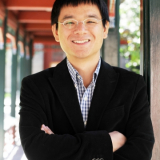This paper studies the evolution of wealth inequality in an economy with endogenous borrowing constraints. In the model economy, young agents need to borrow to finance human capital investments but cannot commit to repaying their loans. Creditors can punish defaulters by banishing them permanently from the credit market. At equilibrium, loan default is prevented by imposing a borrowing limit tied to the borrower's inheritance. The heterogeneity in inheritances translates into heterogeneity in borrowing limits: endogenously, some borrowers face a zero borrowing limit, and some are partly constrained, whereas others are unconstrained. Depending on the initial distribution of inheritances, it is possible that all lineages are attracted either to the zero-borrowing-limit steady state or to the unconstrained-borrowing steady state—long-run equality. It is also possible that some lineages end up in one steady state and the rest in the other—complete polarization.
Files and links
Request a publication
Due to Copyright we cannot publish this article but you are very welcome to request a copy from the author. Please just fill in the information beneath.
